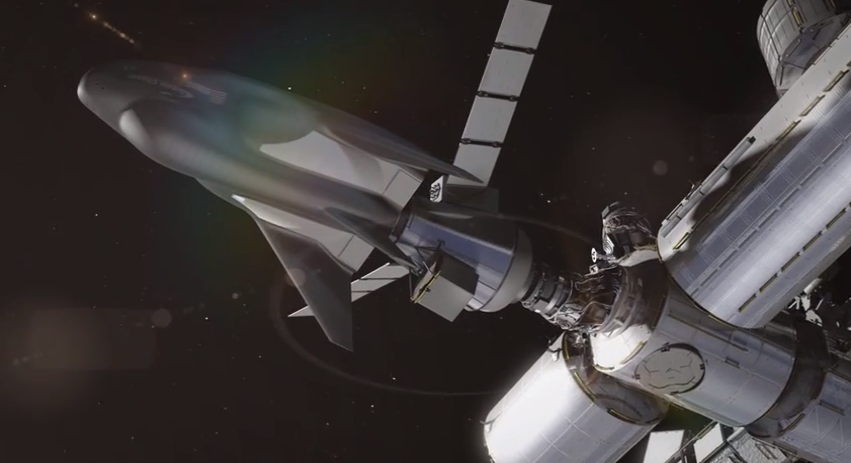
NASA announced today that all three of the remaining contenders will be awarded CRS-2 contracts to provide commercial cargo services to the International Space Station (ISS) beginning in 2019 and lasting through 2024. The agency was expected to eliminate one of the competing companies, but instead awarded contracts to all three in order to provide greater redundancy and a wider range of mission capabilities. Orbital ATK’s Cygnus and SpaceX’s Dragon spacecraft will continue to deliver cargo to the ISS after they conclude their CRS-1 contract commitments, and Sierra Nevada’s Dream Chaser spaceplane will become a reality, after being rejected from NASA’s Commercial Crew Program.
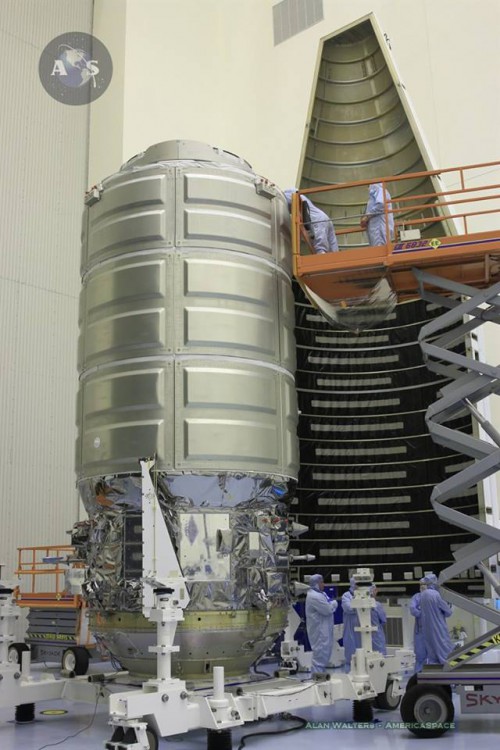
The second round of Commercial Resupply Services (CRS) contracts will differ somewhat from the first. After lessons learned from the loss of two CRS-1 missions, NASA will require each company to provide insurance to cover damage to government property in the event of a mishap during launch, station operations, or cargo return. Instead of setting a minimum cargo requirement for the duration of the contract, each company will be granted a minimum of six missions. Each mission must be capable of delivering between 2.5 and 5 metric tons of mass both to and from the station. All three companies will offer options to carry a combination of pressurized and unpressurized cargo.
NASA plans to fly an average of four missions annually under the CRS-2 contracts. With a maximum potential value of $14 billion for all the CRS-2 contracts combined, NASA will likely purchase more than the minimum of 18 flights. The number and order of missions from each of the commercial partners will depend on NASA’s need for each of their unique capabilities on any given mission.
Orbital ATK will offer three standard mission types for the CRS-2 contract. Cygnus will continue to fly in its enhanced configuration with an extended cargo module and ultraflex solar arrays. Orbital ATK will offer NASA the option of either launching on their Antares rocket from Virginia, or on a ULA Atlas V from Florida if the maximum payload capacity if needed. A new mission type is being offered, capable of carrying unpressurized cargo. The enhanced Cygnus is capable of delivering up to 3,500 kg of pressurized cargo to the station and removing 4,200 kg of trash, which is disposed of via destructive reentry.
To date, Orbital ATK has delivered 7,300 kg of cargo to the ISS over the course of four successful missions under the CRS-1 contract.
“We are grateful for NASA’s continued confidence in our ability to provide reliable and affordable commercial cargo transportation services to the International Space Station,” said David W. Thompson, Orbital ATK’s President and Chief Executive Officer. “With our flexible cargo delivery system now up and running, our team is well prepared to deliver essential supplies to the International Space Station for years to come.”
SpaceX is offering two mission types for its Dragon spacecraft. Dragon will still have the capability to deliver a combination of pressurized and unpressurized cargo, return pressurized cargo and experiments to earth, and dispose of unpressurized trash. In addition, SpaceX will offer NASA the option to either dock or berth Dragon to the ISS on any given cargo mission. Berthing hatches are large enough to transfer bulky experiment racks to and from the station, but they require the crew to grapple the spacecraft upon arrival. Docking ports are smaller, but allow the spacecraft to dock without crew intervention, saving valuable time. The station has two docking ports and two berthing ports, so having the option to use either will be useful when other spacecraft are visiting.
SpaceX has also proposed an option to land dragon on land, rather than splashing down in the ocean. This would reduce recovery time and enable quicker access to experiments. Dragon is capable of delivering 3,300 kg of cargo to the station and can return up to 3,300 kg of pressurized cargo and experiments. Dragon will continue to launch on SpaceX’s own Falcon 9 rocket from Cape Canaveral, Fla.
Sierra Nevada will offer two Dream Chaser mission profiles, with the option of docking or berthing to the station. Dream Chaser will launch from Cape Canaveral atop a ULA Atlas-V, with a folding wing design that will allow the spacecraft to fit inside a standard 5-meter payload fairing. It will be able to deliver up to 5,500 kg of cargo to the ISS and land with a load of 1,750 kg. Dream Chaser will offer the unique capability of providing a low-g reentry profile and a soft runway landing that would protect more delicate experiments.
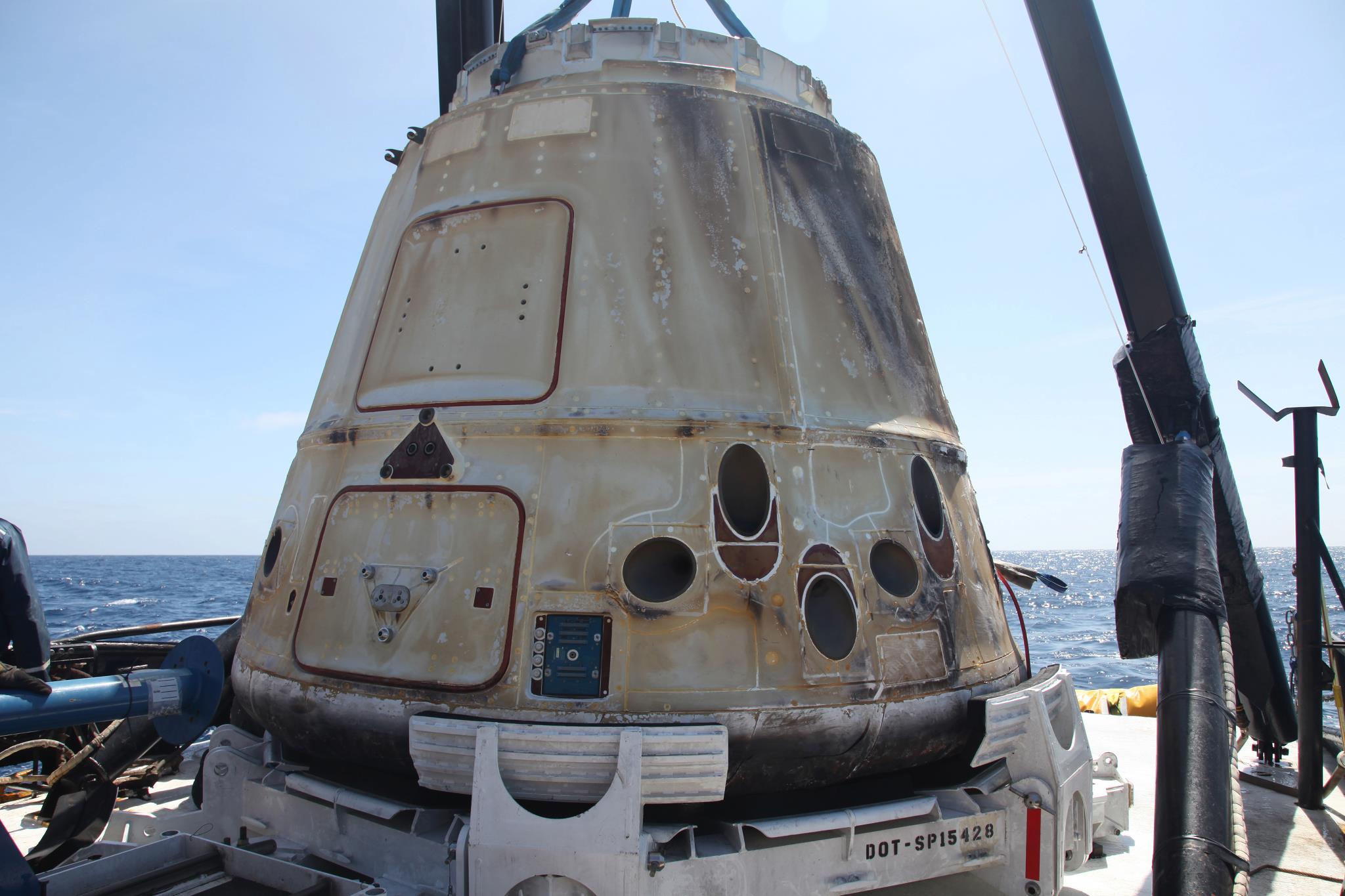
While Dream Chaser will be capable of landing at civilian airports with runways 8,000 feet or longer, it will land back at Kennedy Space Center’s Shuttle Landing Facility, close to facilities where the spacecraft will be processed and launched. Dream Chaser will give NASA the ability to return experiments from space in 3-6 hours, a capability that hasn’t existed since the space shuttle. Because Dream Chaser uses non-toxic nitrous oxide and propane propellants, experiments and cargo can be safely accessed immediately after landing. This is essential for certain biological experiments involving living organisms, tissues, and viruses, which can quickly adapt to Earth’s gravity upon return.
“SNC is honored to be selected by NASA for this critical U.S. program,” said Eren Ozmen, president of Sierra Nevada Corporation. “In such a major competition, we are truly humbled by the show of confidence in SNC and look forward to successfully demonstrating the extensive capabilities of the Dream Chaser spacecraft to the world. While Dream Chaser is still undergoing development and testing, the company is committed to achieving its first launch in 2018, well before the CRS-2 contract begins.”
The CRS-2 resupply flights will coincide with Commercial Crew Program missions. With Boeing and SpaceX launching crews of four, the International Space Station will be able to support a full crew of seven, as originally planned. Since its completion, ISS expeditions have had crews of six, due to the capacity of two Russian Soyuz spacecraft. “This will double the amount of crew time to conduct research,” said Julie Robinson, chief scientist for the ISS Program. “These missions will be vital for delivering the experiments and investigations that will enable NASA and our partners to continue this important research.”
Sierra Nevada will hold a press conference tomorrow (Jan. 15) to update media on plans moving forward for their cargo-only Dream Chaser; AmericaSpace will have a story outlining important details later that evening.
Be sure to “Like” AmericaSpace on Facebook and follow us on Twitter: @AmericaSpace
.




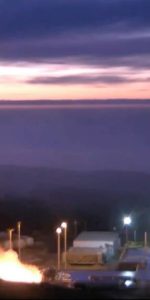
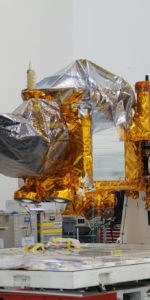
Great article. Congrats to everyone awarded contracts.
Excited that the Dream Chaser will finally fly to the ISS. I had hoped Sierra Nevada would have got the crew contract but this will be nearly as good.
Interesting and informative article:
(1) Six year contract beginning in 2019. Does CRS1 now extend to the end of 2018?
(2) Minimum 18 and Maximum 24 (average of four flights per year) flights during the period.
(3) Up-mass between 5,500 lbs to 11,000 lbs (only Sierra Nevada capable of meeting max).
(4) Maximum cost of $14B.
NASA certainly appears to have learned something from the CRS1 contract. There are no specified metrics by which CRS2 can be independently evaluated. Guess we will just have to take their word everything is going great.
Still, making an attempt a bounding the situation, if you assume:
(1) The maximum 24 flights.
(2) The maximum $14B.
(3) Each Flight carries the 11,000 lb max. (Which only Sierra Nevada could do).
That would come to $53,000/lb.
As compared to the agreed to (but unmet) CRS1 figures:
(1) Orbital Sciences $43,000/lb.
(2) SpaceX $36,000/lb.
“NASA certainly appears to have learned something from the CRS1 contract.”
I believe it was during the last postponement of the award announcement that it was mentioned that the contractors would be required to provide insurance on their payloads as well.
One would expect that NASA is getting something more than ~20 flights for that $14B max or that it will be far under $14B in payments. I’m waiting to hear what else the award covers.
Actually one would hope “that NASA is getting something more than ~20 flights for that $14B max or that it will be far under $14B in payments.”
Best to wait and get more information (if there is any) before expecting anything.
Will be interesting to find out how they plan to budget this. Are they going to give any “up front money” or do they plan to negotiate rates flight by flight. That might work for SpaceX/Orbital at this point, but you would think Sierra Nevada could really use some extra cash to continue it’s vehicle development.